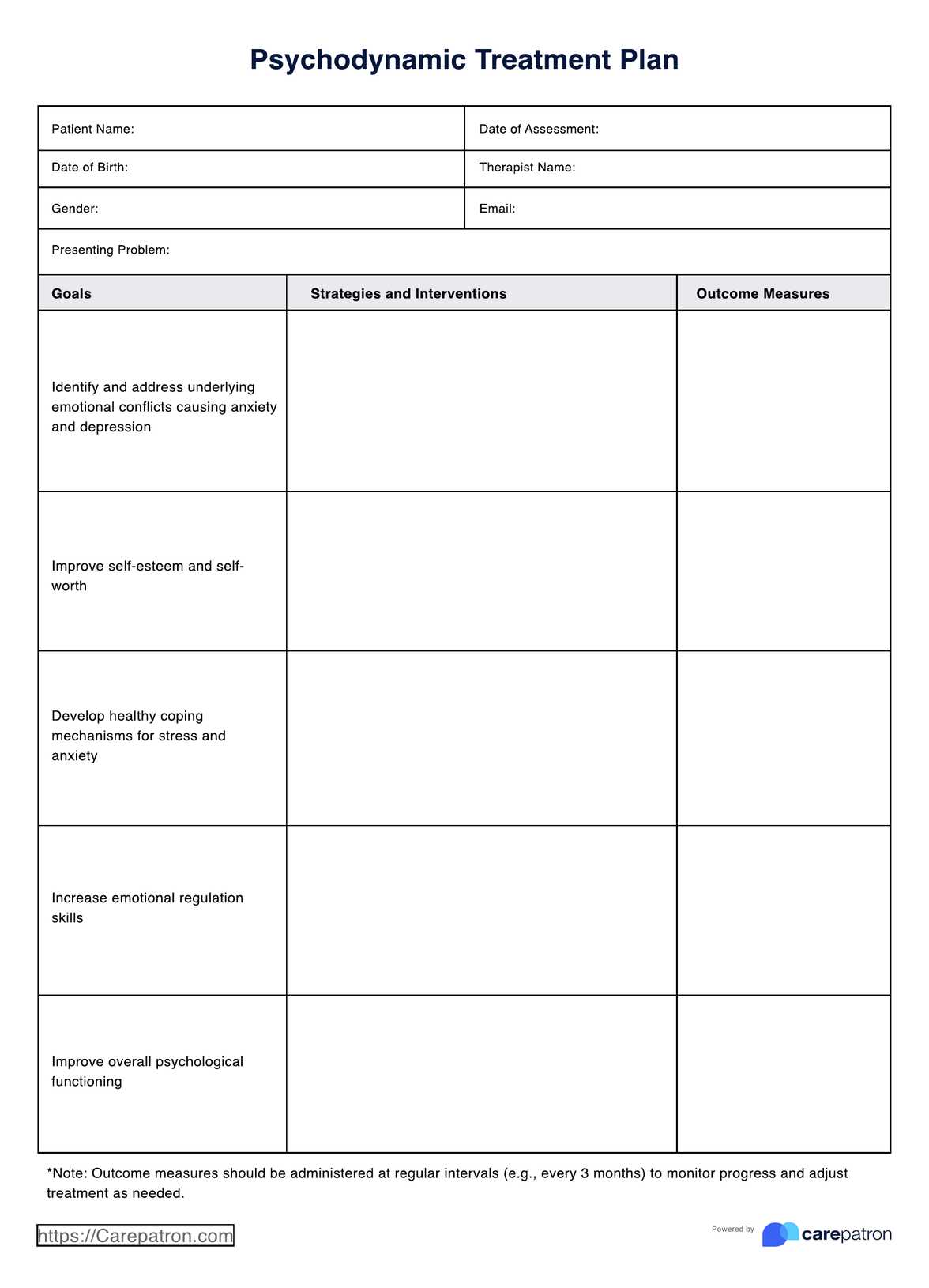A psychodynamic treatment plan is used when an individual experiences symptoms of mental health conditions that stem from unresolved emotional conflicts. It benefits those with anxiety, depression, personality disorders, and other mental health conditions.

Psychodynamic Treatment Plan
Discover how psychodynamic treatment plans can enhance mental health. Explore Carepatron's psychology software for efficient practice management.
Psychodynamic Treatment Plan Template
Commonly asked questions
To write a psychodynamic treatment plan, the clinician first assesses the patient's symptoms and conducts a thorough evaluation to identify underlying emotional conflicts. The clinician then develops goals and strategies to address these conflicts, including free association, dream analysis, and emotional processing.
Psychodynamic treatment plans are helpful because they allow clinicians to address the root causes of mental health conditions. The patient can better understand their emotions and develop healthy coping mechanisms by exploring unconscious thoughts and feelings. This therapy encourages positive self-talk, challenges negative beliefs, and helps patients build self-compassion. The use of outcome measures can track progress and modify treatment plans accordingly.
EHR and practice management software
Get started for free
*No credit card required
Free
$0/usd
Unlimited clients
Telehealth
1GB of storage
Client portal text
Automated billing and online payments











